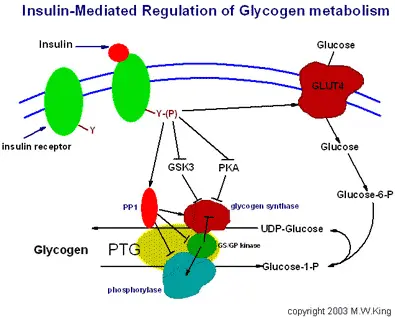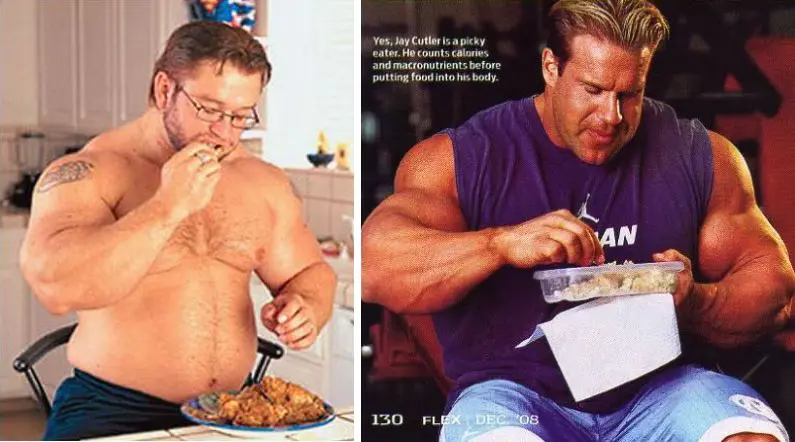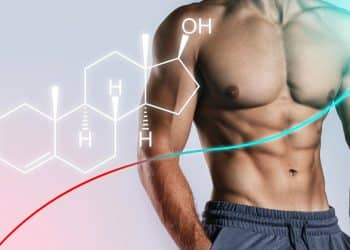Insulin sensitivity and carbohydrate tolerance are two interconnected issues that many bodybuilders would benefit from tweaking in their own diet. Getting these two functions under your control can help you maximize your fat loss and continue cutting fat.
Even people whose progress in cutting has slowed down can benefit from a diet focused on carbohydrate tolerance. Maximizing your carbohydrate tolerance allows you to sidestep the insulin response to the food you eat by minimizing insulin spikes.
You will stop your body from storing fat and instead force it to burn fat.
What Is Insulin Sensitivity and Carbohydrate Tolerance?
Insulin sensitivity is an important aspect of your body’s storage of fat. However, it is usually the primary focus of any diet plan, which causes many people to neglect carbohydrate tolerance. Insulin sensitivity describes the way the body reacts to insulin. A tissue with a high sensitivity to insulin responds readily to insulin, while a low insulin sensitivity means that a tissue does not respond readily to insulin.
Ideally, your muscle tissue should be highly sensitive to insulin, while fat tissue should have a low sensitivity to insulin. Muscles that have a high sensitivity to insulin take in amino acids and carbohydrates readily.
Level Up Your Fitness: Join our 💪 strong community in Fitness Volt Newsletter. Get daily inspiration, expert-backed workouts, nutrition tips, the latest in strength sports, and the support you need to reach your goals. Subscribe for free!
This is why post-workout meals usually include a simple carbohydrate.
Simple carbohydrates cause a spike in insulin, which causes your nutrient-deficient muscles to store the nutrients you consumed. Insulin makes your body store fat, and it stops your body from burning fat for energy. Fat tissue that is more resistant to insulin does not store fat as readily.
Carbohydrate tolerance is often neglected in favor of focusing on insulin sensitivity. However, targeting and improving your carbohydrate tolerance, the way your body reacts to carbohydrates, is a more efficient way of managing your insulin sensitivity. If your carbohydrate tolerance is high enough, your insulin sensitivity will not even be an issue because your insulin levels will be low. Keeping a low insulin level helps you burn body fat, and also prevents your body from storing fat.
Your body prioritizes its energy sources, using carbs first, protein second, and fat last. When excess carbohydrates are stored as fat, they are no longer available for immediate use by your body, meaning that the proteins you eat will be used for energy. This can slow down your gains in muscle mass. If you keep your insulin levels low, you will be able to maximize muscle-building.
How Can I Maximize My Carbohydrate Tolerance?
A low-carbohydrate diet and an exercise regimen are the two steps to carbohydrate-tolerance. By minimizing the amount of carbohydrates you consume, you use up all of the stored glycogen in your muscles. This ensures that your muscles store as little glycogen as possible, and making them able to take up the carbohydrates that you do consume. Intense exercise burns the glycogen stored in your skeletal muscles for energy, leaving them further depleted and open for absorbing carbohydrates from your bloodstream. Exercise is a short-term method of inducing a carb-depleted state while keeping a low-carb diet is a long-term solution.
One additional benefit of having a high carbohydrate tolerance is in situations where you find yourself deviating from your diet plan and taking in more carbohydrates than you normally would. People with a low tolerance for carbohydrates – who easily experience insulin spikes after eating carbs – usually store some of these carbs as fat. However, people with high carbohydrate tolerance do not experience this kind of insulin spike because their carbohydrate-depleted muscles absorb much of the carbohydrate content that they ingest. This means that if there is a special occasion meal or party, you can cheat on your diet without having to worry about how it will damage your diet plan.
The more quickly you enter a state of carbohydrate depletion, the more quickly you will begin to burn fat. Altering your diet is a long-term method of getting into this state, and exercise is a short-term method. By using both in tandem, you can enter a state of carbohydrate depletion within one week.
One way to maximize your results with this program is to do your workout in two separate sessions in two parts of the day. Doing your cardio separate from your strength training ensures that your body has had enough rest to fully benefit from both activities. Even when you have a relatively high carbohydrate content in your diet, it is hard to fully push yourself if you are doing high-intensity cardio and high-intensity weight training. Doing back-to-back high-intensity cardio and high-intensity strength training means that the later routine is going to be compromised because of the muscle fatigue from the first routine. It is even harder to do this on a low-carbohydrate diet, because your body is more likely to need to use protein for energy, meaning that a loss of muscle mass is possible.
Exercising in two sessions as opposed to one makes you less likely to lose muscle mass, which will keep your metabolism from slowing down. Muscle mass is imperative to a strong metabolism since muscle tissue burns calories at a high rate. In addition, you will be able to fully push yourself in each workout session. Bringing full intensity to both your cardio and strength training routines will use up more of the glycogen in your muscles. Your second routine will prevent more glycogen from being stored from the low carbohydrate content of your diet.
Day 1: Priming
The first day of your carbohydrate depletion program involves eating very little carbohydrate content. This is not where your body begins to burn fat; it is only the first step to getting to a carbohydrate-depleted state, which allows your body to burn fat. Your workout should involve thirty minutes of high-intensity interval training followed by fifteen minutes of low-intensity cardio such as jogging or walking. In a separate workout, do your strength training.
Days 2-5: Fat Burning
The second through the fifth days of this program involves eating slightly more carbohydrates than the priming day. Your workout is identical to that of the priming day: thirty minutes of high-intensity interval training, fifteen minutes of low-intensity cardio, and then your strength training in a separate session.
Days 6-7: Refeeding
During refeeding, you consume a large amount of carbohydrates, causing your muscles to draw in and store glycogen again, leaving your muscles in an anabolic state. This allows your muscles to repair and retain mass. Glycogen storage is important in this stage, which means that there should be no high-intensity cardio exercise on these days. High-intensity cardio will deplete the glycogen stores. Instead, only do your strength training.
Focusing on carbohydrate tolerance instead of insulin sensitivity makes more sense than emphasizing insulin sensitivity alone. It is more efficient, since you do not need to control your body’s response to insulin.
Instead, you eliminate the need for a response at all by minimizing the insulin in your system. Focusing on carbohydrate tolerance gives you the opportunity to bring your body to a state where it burns fat almost continually. When you minimize the amount of bioavailable insulin and break your workout routine into separate cardio and strength training sessions, your body is able to burn fat at an even greater pace.













